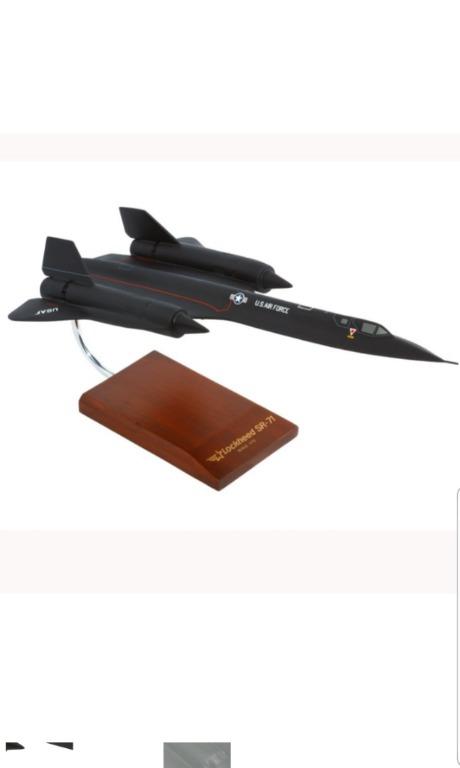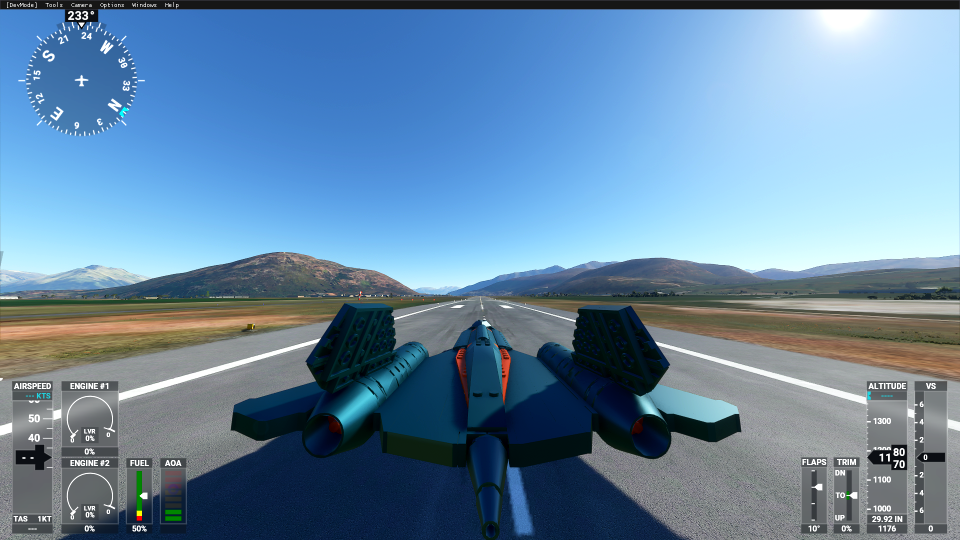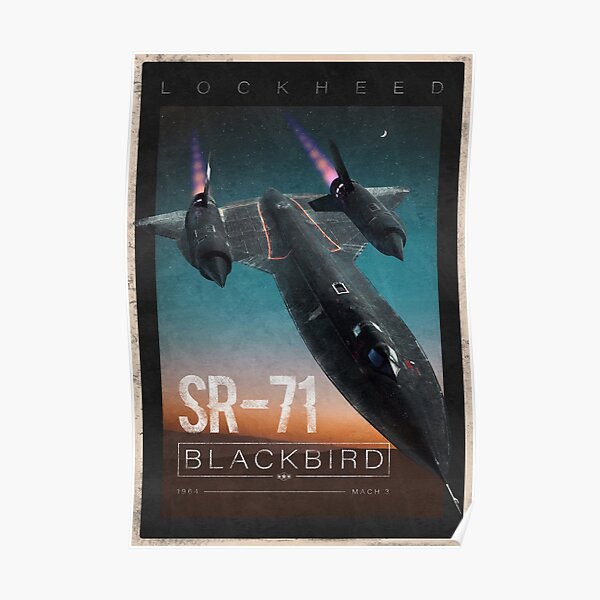- The SR-71 Simulator is a full-motion simulator at NASA Dryden Flight Research Center, Edwards, CA. It is the only SR-71 simulator and was updated in 1990 at a cost of over 22 million dollars. The last I checked, the simulator was still at NASA.
- A pack containing three different Lockheed SR-71 add-ons from three different developers for Microsoft Flight Simulator X.All three feature special animations and 3D VCs (virtual cockpits). This add-on has been tested in Prepar3D and is compatible up to P3Dv3. We have not tested compatibility with P3Dv4 or P3Dv5.Models Included In This PackThis pack includes three different models by three.
Dryden Flight Research Center
P.O. Box 273
Edwards, California 93523
Phone 661/276-3449
FAX 661/276-3566
Alan Brown
NASA Dryden Flight Research Center
(661) 276-2665 / 3893
alan.brown@nasa.gov
By Jay Levine
Editor, NASA Dryden X-Press
One of the last vestiges of the SR-71 high-speed flight project at NASA's Dryden Flight Research Center was hauled away on a flatbed truck in early July, destined for a new home at the Frontiers of Flight Museum in Dallas, Texas.
Developed in the 1970s to support training of the Blackbird spy plane crews at Beale Air Force Base near Marysville some 45 miles north of Sacramento, the SR-71 simulator was the only one of its kind.
The trainer's analog computers underwent an extensive upgrade in 1987. But priorities change, and when the simulator was finally ready for reinstallation at Beale, it was left in limbo in Binghamton, N.Y., after the Air Force decided to retire the Blackbirds in 1989.
Dryden was the destination for three of the Mach 3-plus reconnaissance aircraft being retired. As a result, the simulator – and its dozens of upgraded components – found a home at the NASA center as well.
The task of moving the simulator to Dryden and returning it to operational status was far more complex than anticipated. The simulator and its components filled an entire 1,800-square-foot area in Dryden's hangar 4801. Eleven engineers from Link Simulation and Training, of Arlington, Texas, took six months to reassemble and reactivate it.
The upgrades were impressive, according to Joseph Ciganek, a NASA electronics technician who oversaw the operation and maintenance of the equipment. Prior to the system's extensive overhaul, training, mission planning and emergency situations were set up for pilots using patch cords, switches and dials. The upgrades incorporated displays, computer keyboards and joysticks to select and monitor pre-programmed modes representing a wide variety of flight systems and integrated avionics systems for emergency and malfunction situations used to challenge flight crews.
After the Link engineers left and Dryden personnel became familiar with the simulator's operation, several intermittent hardware and software bugs had to be resolved. Although refurbished with state-of-the-art equipment, there was 'quite a bit of troubleshooting to resolve the intermittent problems based on the new configuration,' said Ciganek.
In 1995 the Air Force reactivated the SR-71 for a second tour of duty per Congressional direction, reclaiming one of the three that had been loaned to Dryden for research purposes as one of two Blackbirds brought back to military operational status. Air Force officials had considered returning the simulator to Beale before learning of the complexity of the move and the time that reconstructing the system there would require.
A compromise resulted in the simulator remaining at Dryden, with crews from the NASA center and the Air Force sharing it. Air Force reconnaissance control panels for morning training sessions were swapped out in the afternoons with NASA instrumentation and controls, Ciganek recalled.
'When we received the SR-71s in 1990, it was the center's intent to use them as research platforms for (aeronautical) science experiments – real-time wind tunnels, if you will,' he said.
Over the course of almost a decade, Dryden's SR-71A and SR-71B trainer version, bearing tail numbers 844 and 831, were flown in a variety of high-speed research experiments - aerodynamics, propulsion, structures, thermal protection materials, high-speed and high-temperature instrumentation, atmospheric studies and sonic boom characterization, even serving as a test platform for Lockheed-Martin's linear aerospike rocket engine experiment, or LASRE. The 'hot fire' of the subscale aerospike engine never took place, however, and the X-33 single-stage-to-orbit technology demonstration project that was to use full-sized versions of the linear aerospike engine was cancelled.
Following a series of four research flights by Dryden's SR-71A in 1999 to evaluate stability and handling characteristics at speeds of about Mach 3 with the 41-foot-long LASRE test fixture mounted on top, the Blackbirds never flew another research mission. The very last SR-71 flight, flown by NASA 844, occurred in October of that year, not for military reconnaissance or aeronautical research, but for the crowd at the annual Edwards Air Force Base open house and air show. The retired Blackbird is now on display at NASA Dryden.
Ciganek and retired Dryden software engineer Tom Wolf managed the simulator's use for NASA while two Link engineers assisted Ciganek with Air Force use of the simulator until the service's two operational SR-71s were again retired in 1997.
With no aircraft to support, the SR-71 simulator was just taking up space - much of it needed for relocation of the Dryden Model Shop. The unit was first offered to the Smithsonian Institution's National Air and Space Museum and then to the U.S. Air Force Museum at Wright-Patterson Air Force Base, Ohio. Neither had adequate space available to house the equipment.
Conversations then began with the former SR-71 simulator contractor, Link, which proposed that the Frontiers of Flight Museum in Dallas, an affiliate of the U.S. Air Force Museum, acquire the simulator. Working with Link and Air Force representatives, Ciganek and Dryden's Mike Relja, a former SR-71 test engineer, developed a plan to relocate and restore the simulator at the Texas museum, a plan the Air Force accepted.
A new generation of visitors to the museum will now be able to 'fly' the same simulator as the pilots of the storied SR-71 Blackbird did during its heyday as the fastest, highest-flying production aircraft ever built.
Photo Editors: Photos EC99-44962-4 and EC90-275-1 to support this release are available in high resolution on the NASA Dryden web site at: http://www1.dfrc.nasa.gov/Gallery/Photo/SR-71/index.html under reference to news release # 06-30. Numerous SR-71 aircraft photos are also available on that site.
- end -



To receive status reports and news releases issued from the Dryden Newsroom electronically, send a blank e-mail message to dfrc-subscribe@newsletters.nasa.gov. To unsubscribe, send a blank e-mail message to dfrc-unsubscribe@newsletters.nasa.gov. The system will confirm your request via e-mail.

Lockheed SR-71 Blackbird Triple Pack For FSX
The SR-71 Blackbird; the Habu. The SR-71 has to be one of my all-time favorite aircraft, even beating out Concorde and the B-1 for the top slot. Ever since I discovered that the flight manual for this seemingly invincible aircraft was declassified, my obsession for the aircraft has only grown as I read more about the legendary aircraft. The accurate flight model reflects the SR-71's ability to approach Mach 3 and peer down on the earth from altitudes that look like telephone numbers. Extensive detail modelling and animation including brake 'chute, afterburners and Head-Up Display. Seven different SR-71 liveries are included. Show more Show less.